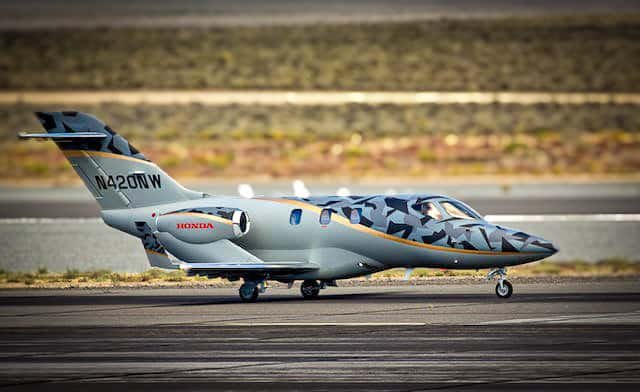Ever wondered what’s involved in financing an airplane? You’re not alone, so we’ll tell you about it.
Many people want to own an airplane, but financing an airplane, and the expenses involved with ownership can be a major obstacle, and sometimes stop people before they even start. But it doesn’t have to.
Don’t worry, there are many financing options available to help you realize your flying goals. This guide will walk you through the steps and information necessary to finance an airplane.
In this article, we will go over the following to help you understand the journey:
Step 1: Financing an Airplane – Determine Your Budget

Establish your budget for an airplane before stepping into the world of aircraft financing. Take into account the initial cost, recurring costs (including upkeep, storage, insurance, and gasoline), and any potential unforeseen costs.
As a general rule, create a budget that allows wiggle room for unforeseen expenses, because there WILL be some.
If you intend to pilot the aircraft yourself, be careful to account for the price of pilot education, licenses (certificates), any recurring pilot training if required, and routine physicals when needed.
Step 2: Choosing Your Aircraft
Similar to cars, there are many different types, sizes, configurations, and price ranges for aircraft. Your choice of aircraft, from single-engine to light (or even heavy) private jets, will have a HUGE impact on your financing possibilities.
You will eventually be comparing several models’ features, specifications, maintenance schedules, log books, and compatibility with your intended usage to fulfill your mission needs.
An example might be that before you start researching financing an airplane, you start looking at Cessna 172s, but your typical mission might be longer, or, you’re looking at an airplane that only seats 3 passengers when you want to fly your family of 5… It might not make sense. Something you might not even think about is, do you have any pets you want to take along? You might want to read more about traveling with pets here so you consider all options.
Making sure your aircraft meets your needs (mission) is extremely important before you start the process of financing an airplane, and most say is the #1 thing to put on your list when starting your search. and considering financing an airplane.
Finding specialist finance will be much simpler once you’ve decided on the right airplane.
Step 3: Research Financing Options
When it comes to financing an airplane, you have several routes to explore. Here are a few you will want to consider.
Finding a Lender

Finding a lender is one of the most crucial phases in buying an aircraft. Choosing the right lender could have an impact on whether or not you make the proper purchase. It can make all the difference whether you end up financing an airplane, or NOT!
Although there is no shortage of lenders who know about financing cars, financing an airplane is a different, and specialized area. One of the biggest things is to confirm that your lender is informed and experienced with general aviation financing.
The worst is learning that a lender has no experience with or knowledge of the aviation industry.
A lender’s knowledge of the general aviation industry is essential when choosing one for financing an airplane.
At a minimum, you should consider the following questions:
- Is my lender up to date on FAA rules pertaining to aviation financing?
- Does my lender completely understand key FAA regulations?
- Do they have prior experience financing aircraft?
- Are they endorsed by recognized owner groups, such as NBAA or AOPA?
Traditional Bank Loans
Many banks provide loans designed for the purchase of airplanes, and some typically provide competitive rates, but they could have strict eligibility requirements for financing an airplane and might demand a sizable down payment.
Due to the higher market liquidity of newer, mainstream models, they often prefer financing them.
Non-Bank Lenders
Aviation financing services are provided by organizations like Global Jet Capital, AirFleet Capital, and Stonebriar Commercial Finance, to name just a few.
These companies might offer more accommodating terms and may finance older or more unusual aircraft models than banks do. Some only finance an airplane that is over $10m, and others work in the lower ranges. You will need to find this out before you open a discussion with any of them.
Leasing
A cost-effective option to finance an airplane without making a sizable upfront commitment is through leasing. Companies such as AerCap, Aviation Capital Group (ACG), and GE Capital Aviation (GECAS) are a few businesses that provide leasing for airplanes.
You then have the option to either buy the aircraft outright or return it at the conclusion of the lease term.
This brief overview from AirFleet Capital outlines the difference between an aircraft lease vs. a loan.
Step 4: Understanding the Loan Process
Although they are similar to auto loans in some ways, aircraft loans can differ in a few ways due to the bigger scale of the amounts involved.
We have found this very useful online loan calculator provided by AOPA. It will help you understand terms and payments over time to help your research.
Loan Application
You’ll need to fill out a loan application with thorough financial information, including your income, obligations, assets, and credit history. This data will be used by the lender to determine your creditworthiness.
Keep in mind, that whichever direction you go with for financing, you will need to have your insurance in place. This, just like financing, has many requirements and options to consider, which we will discuss in another article.
Down Payment
A down payment is frequently required for aircraft loans; it normally ranges from 10% to 20% of the purchase price. The precise amount will depend on a number of variables, including the age and kind of the aircraft as well as your credit history.
Loan Term
Depending on the age of the aircraft and the terms of the loan, loan terms for aircraft might range from five to twenty years. Longer durations can typically be financed for newer aircraft.
Interest Rate
The principal amount, loan period, market rates, creditworthiness, and the lending institution are just a few examples of the variables that affect interest rates for aviation loans.
Aircraft Evaluation
Lenders are required to analyze the aircraft before providing a loan. To make sure the aircraft’s value corresponds with the purchase price, this procedure could very likely require an appraisal.
Documentation Required

You’ll be required to provide various documents, such as proof of insurance, the purchase agreement, and potentially a pre-purchase inspection report. Additionally, the lender will place a lien on the aircraft until the loan is paid off.
Before you even contact an aviation lender, you should assemble the following documents, as they will ask for them.
- Personal Financial Statement
- Two Years Personal 1040 Federal Tax Returns (with all schedules)
- Aircraft Specs Sheet – Listing avionics and any optional equipment
- Proof of Liquidity – Copies of recent bank and brokerage statements
- Two Years of Business Tax Returns with P&L and Balance Sheet (if applicable)
- Clear and Legible Copy of your Driver’s License
- For S-Corps – Articles and Certificate of Incorporation
- For LLCs – Certificate of Formation, Operating Agreement, Articles of Organization
We even suggest (if already a pilot) to have copies of your certifications and a your documented flight hours. Showing your skills and professionalism goes a long way with any lender!
Step 5: Applying for a Loan or Lease
The next step is to formally submit an application for the loan or lease once you’ve decided on a lender and are familiar with the terms and conditions of your potential financing agreement.
You must first put together a thorough application packet. This normally consists of a statement of use for the aircraft, financial statements, tax returns, a thorough personal budget, and a credit history.
You should be ready to provide evidence of your capacity to repay the loan and proof that you are aware of the expenses related to owning and maintaining an aircraft.
Your application will be examined by the lender, who will then decide on the loan or lease’s conditions, including the down payment, interest rate, and duration of the payback period (term). Additionally, they will describe any unique requirements, such as required maintenance schedules or insurance responsibilities.
It’s crucial to keep in mind that financing an airplane entails a large financial commitment, so you should read all terms and conditions carefully before agreeing to anything. Don’t rush!
It is always recommended that you seek legal advice to understand the agreement thoroughly before finalizing anything. It could save you lots of potential frustration in the future.
Step 6: Closing the Deal

It’s time to complete the transaction after your application has been accepted and the terms have been agreed upon.
This will probably require a closing procedure in which the lender, the seller, and you, the buyer, will gather (either physically or online) to sign legal documents, exchange money, and transfer title.
Consider working with a specialist with knowledge in aircraft transfers to make sure this procedure, which can be complicated, goes successfully, otherwise, you could find yourself waiting… (e.g.: for title and/or tail number transfer). Time is money!
You must present proof of insurance, make the required down payment, and sign the loan or lease agreement at closing. When everything is done, the lender will pay the seller the money, and you’ll be the happy owner of your own airplane.
Step 7: Take to the Air!
After closing, the airplane is yours to use as you choose! But keep in mind that owning an airplane comes with continuing responsibilities. Keep up with your loan payments, maintenance obligations, insurance, and other legal obligations, such as scheduled maintenance and safety inspections.
Important Considerations
While financing an airplane can help you realize your dream of flying, it’s important to go into the process fully aware of all the expenses and obligations associated. An airplane requires extensive maintenance, which goes beyond the cost of the initial purchase.
You should already have set up a budget for all of your fixed and variable costs of ownership, so there are NO surprises!
While not required, it’s a good idea to have some flight experience before making the decision to buy an aircraft. Consider taking flight lessons, renting a variety of aircraft, and hanging out with seasoned pilots and aircraft owners if you’re new to aviation.
You will gain priceless knowledge about the types of aircraft that are suitable for you, the complexities of flying and maintaining an aircraft, and whether purchasing an aircraft is the best option for you.
Conclusion
To summarize, financing an airplane is an involved multi-step process that requires significant thought and planning.
You can successfully manage the procedure and take it to the skies in your very own aircraft by extensively researching all of your alternatives, knowing the current and future fees involved, and working with skilled aviation professionals.






